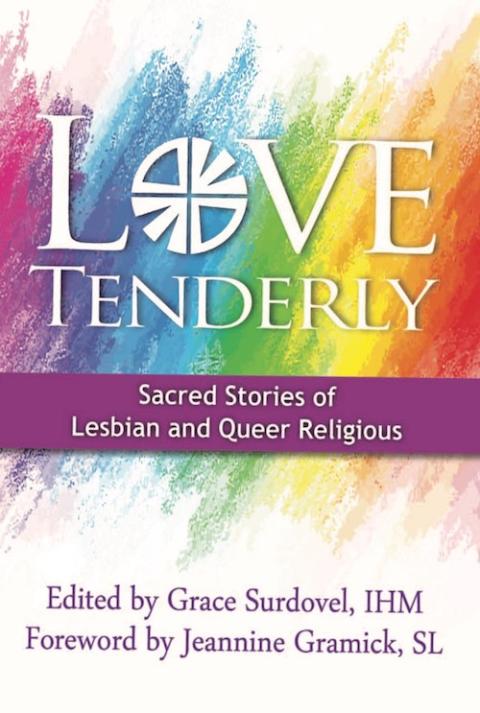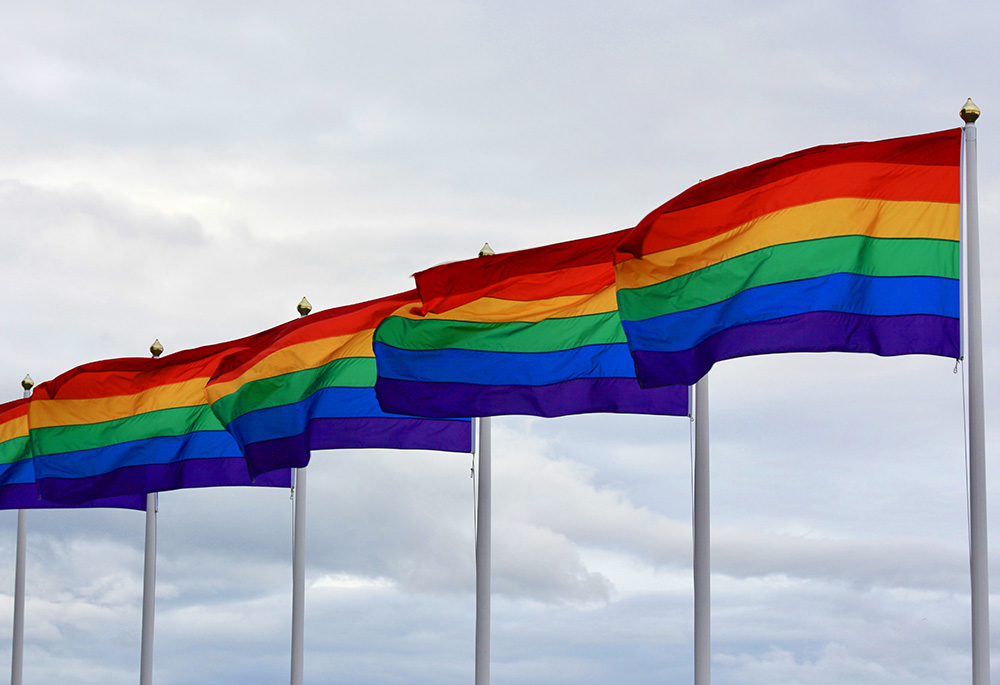
(Pixabay/Sergio Carabajal)
I arrived in Racine, Wisconsin, on a Friday afternoon in March, where 44 Sisters from 22 congregations were coming together for the New Ways Ministry gathering. I looked around and smiled, thinking, "Sisters sure do have a knack for creating intentional space." There were rainbow-colored centerpieces and candles, chocolate bars and what appeared to be pins displaying various LGBTQ flags. I was pleased to identify a follow-up action so early on in the weekend: I could take this pin with me and wear it as an outward sign of support for the LGBTQ community.
When I picked it up, there was no pin on the back. Instead, it was just shiny metal. I assumed mine was broken or missing a piece. I asked another sister if her pin were the same. She looked at me, puzzled: "It's not a pin, it's a mirror." Of course!
This decorative mirror, a combination of external supportive expression and an invitation to personal reflection, served as a perfect symbol of this year's New Ways Ministry conference, organized around the theme, "Lesbian and Queer Religious: Our Sacred Stories Continue." The conference was offered for LGBTQ sisters, sisters in leadership or formation ministry, and other sister allies.

Cover art for "Love Tenderly" (New Ways Ministry)
Each of the conference presenters had authored a chapter of the anthology, Love Tenderly: Sacred Stories of Lesbian and Queer Religious, published in 2020. Throughout the weekend, they invited us to both hold up a mirror to our own sexual identity and gender expression, and consider what external supportive expression could look like in our communities to create safe spaces of belonging for LGBTQ people.
The format of the Love Tenderly book itself had a way of holding up a mirror for me before I even arrived in Racine. The author of each chapter was asked to reflect on the same set of questions. As I read through the list, it struck me that many of these questions are relevant for any vowed religious person:
- At what age were you aware of your sexuality?
- At what age did you feel drawn to religious life, and what drew you in?
- How has your understanding of celibate chastity shifted over time?
- How have you integrated your sexual identity with your religious life commitment?
As I delved into the book in preparation for the conference, I imagined the rich conversations that could come about if all vowed religious, whether they identify as LGBTQ or not, were invited to reflect on and share around these questions.
The first session's presenter invited us to do just that, and the resulting conversation was profound. Each of us was invited to peer into a mirror: to look at how our own congregations make space to honor these sacred stories, and how we integrate these parts of ourselves on a personal level. Presenters looked bravely into a mirror at their own journey of embracing their sexuality, gender identity and expression in the context of religious life and shared the fruits of their reflections with us. They also shared the ways their lives have changed since the book Love Tenderly was published.
Advertisement
The atmosphere of trust and candor during the conference allowed for honest questions and sharing among participants from different congregations, generations and identities on the spectra of sexual orientation and gender identity. Sisters from the baby boomer generation, the Greatest Generation and even Generation X expressed that the term "queer" had a negative connotation for them growing up, and some cannot shake the reaction that the term is offensive, despite its common use today. Millennial sisters, however, expressed comfort with using the term interchangeably with LGBTQ.
One sister's voice cracked with emotion when she shared that after coming out to her congregation as lesbian, another sister recoiled from her embrace, as if her sexual orientation meant she would be attracted to every sister. Others in the room nodded knowingly, acknowledging the discriminatory scrutiny of lesbian sisters, compared to heterosexual sisters who would not be assumed to be attracted to any male they embrace.
Another sister apologized publicly for her negative feelings and rejection of community members who dressed in a more masculine style. Growing up, she said, she heard her mother talk about people like that as "man-ish," and she was taught that it was not acceptable for girls to look that way. One person seated at my table, who had the courage to come out as lesbian to her congregation decades ago, shared that the personal exploration continues even now: "I just want to be authentic, and I'm not sure where that's going to take me," she said.
Presenters shared mixed responses from their congregations upon learning that they contributed to the book Love Tenderly. One congregation was inspired to organize a congregation committee to focus on LGBTQ inclusion, and also hosted a Zoom meeting with hundreds of sisters to honor and acknowledge the courage of their members who had shared their stories in the book.

(Pixabay/Filmbetrachter)
Another presenter expressed this journey of deepening awareness of her own identity as one of "coming home." In her words, "I realized I've been home the whole time, but the challenge has been inviting others into my home, to know who I really am." She was surprised when her congregation leadership encouraged her to use both her full name and the name of her congregation in the book, if she felt comfortable doing so. She had not expected such wholehearted institutional support. Still another sister expressed dismay that after sharing her chapter with her congregation, there was almost no response, which left her wondering whether the silence meant disapproval.
As we each held up mirrors to our personal experiences and desires to be embraced as we are and fully embrace others, we also zoomed out to problematic patterns of discrimination against LGBTQ people in our church and world. We discussed the expectations for sisters — habit or not — to dress, look and act a certain way: feminine enough so as not to appear "butch," but not too feminine so as to draw attention to themselves.
Sisters acknowledged internalized homophobia that causes shame for LGBTQ sisters and keeps others from openly supporting them. We acknowledged that while apostolic religious communities in the U.S. are known for being on the front lines of justice work, we often shy away from issues like LGBTQ equality, given the friction our public support could cause with the hierarchical church.
Toward the end of the conference, we turned over the mirror and shifted the conversation toward ways we can express external support: structures and conversations in our congregations and beyond that would create more welcome for LGBTQ Sisters. Some identified the need for education in congregations about the Genderbread Person, a tool which presents an accessible way to understand the differences between gender identity, anatomical sex, gender expression and attraction (more commonly known as sexual orientation).
One sister named the importance of self-identifying as LGBTQ allies within our congregations so that others know they are safe to be their whole selves with us. We all acknowledged the need to keep creating spaces like this for open conversation and inviting others to join us. As we went our separate ways, the invitation to "Love Tenderly" continues, inviting us to engage others in the collective work toward LGBTQ inclusion in our church and world.







